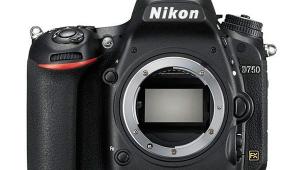Do More Megapixels Equal Better Photos?

There's a famous line from the otherwise forgettable movie "The Godfather: Part III." It's the scene where Al Pacino, playing an aging Michael Corleone (in bad prosthetics and make-up), laments that he can't seem to get out of the family Mafia business and live the straight life. "Just when I thought I was out . . . they pull me back in," he says angrily.
That's sort of how I feel about the continuing megapixel war for digital cameras. "Just when I thought I was out, they pull me back in!" This battle to have the camera with the most pixels escalated again a few weeks ago when Canon introduced the 50.6-megapxiel EOS 5DS and 5DS R digital SLRs. For those keeping score at home, that's the highest resolution for a full frame DSLR ever.
Do we need all these pixels in a 35mm-sized imaging sensor? For most photographers, probably not and Canon knows that. These cameras (the difference between the two models is the 5DS R model features a cancelled low-pass filter effect) are, for lack of a better word, "niche" products. That niche though, which includes landscape, architectural, portrait, beauty, and commercial photographers (just to name a few) who require as much resolution and detail as they can get, is quite large and overlaps with Shutterbug's readership.
According to Canon, the new 5D models are designed to be smaller, less expensive alternatives to medium format digital models.
"We're actually competing against the medium format camera backs but in the 35mm format this is much smaller, more compact and with a greater access to lenses," Canon USA's Chuck Westfall told Shutterbug prior to the launch of the 5DS and 5DS R.
Westfall added that "[The new cameras] are not prioritized towards low light shooting or to video" even though there are video features in both models. The pixel pitch (aka "size") for the Canon 5DS and 5DS R is 4.14 microns, compared to the larger, 6.2 pixel pitch in the Canon 5D Mark III, which performs well in low light at high ISOs.
So, yes, the 5DS and 5DS R are not for everybody. But when you compare their price tags -- $3,699 and $3,899, respectively -- to medium format cameras, they're relative bargins. The 51.4MP Pentax 645Z, which is one of the least expensive new medium format cameras out there, sells for $8,499. Most medium format cameras, which, it should be noted, feature significantly larger sensors than 35mm, cost $11,000 and up.
Image quality from these two new megapixel monsters from Canon remains to be seen. The cameras don't ship until June 2015, and we haven't even had a chance to lay hands on them yet. But if the 5DS and 5DS R can produce images with enough quality and detail to rival medium format (and knowing Canon's track record, it's possible), we could see the megapixel war escalate even further. "Just when I thought I was out. . ."
(As a side note, as one Shutterbug reader pointed out, new cameras with such massive resolution means photographers are going to have to purchase larger and larger storage devices, along with pricey computers with more processing power to edit these huge image files. Somewhere, digital storage and computer companies must be smiling right now.)
On the other end of the spectrum, you have Olympus, which refuses to be drawn into the pixel fray. The company recently released the Olympus OM-D E-M5 Mark II, a mirrorless compact system camera, which once again uses a 16MP Micro Four Thirds sensor similar to the chip in the previous model.
Instead of cranking up the pixels, Olympus has decided to concentrate on handy photo features with the E-M5 II, including 5-axis image stabilization for steadier and sharper shots; a 3-inch flip-out, vari-angle touchscreen on back; faster 81-point autofocus; in-camera WiFi, and a relatively lightweight, dustproof and splashproof camera body. The E-M5 II also costs a fraction of the price of the new Canons: $1,099 (body only).
This is not to say Olympus has ignored the megapixel war completely. In an effort to compete with the higher resolution full-frame cameras, the E-M5 II features a new 40MP high-resolution mode that combines eight images into one super-duper high-res shot.
Just when Olympus thought it was out . . .
- Log in or register to post comments














































